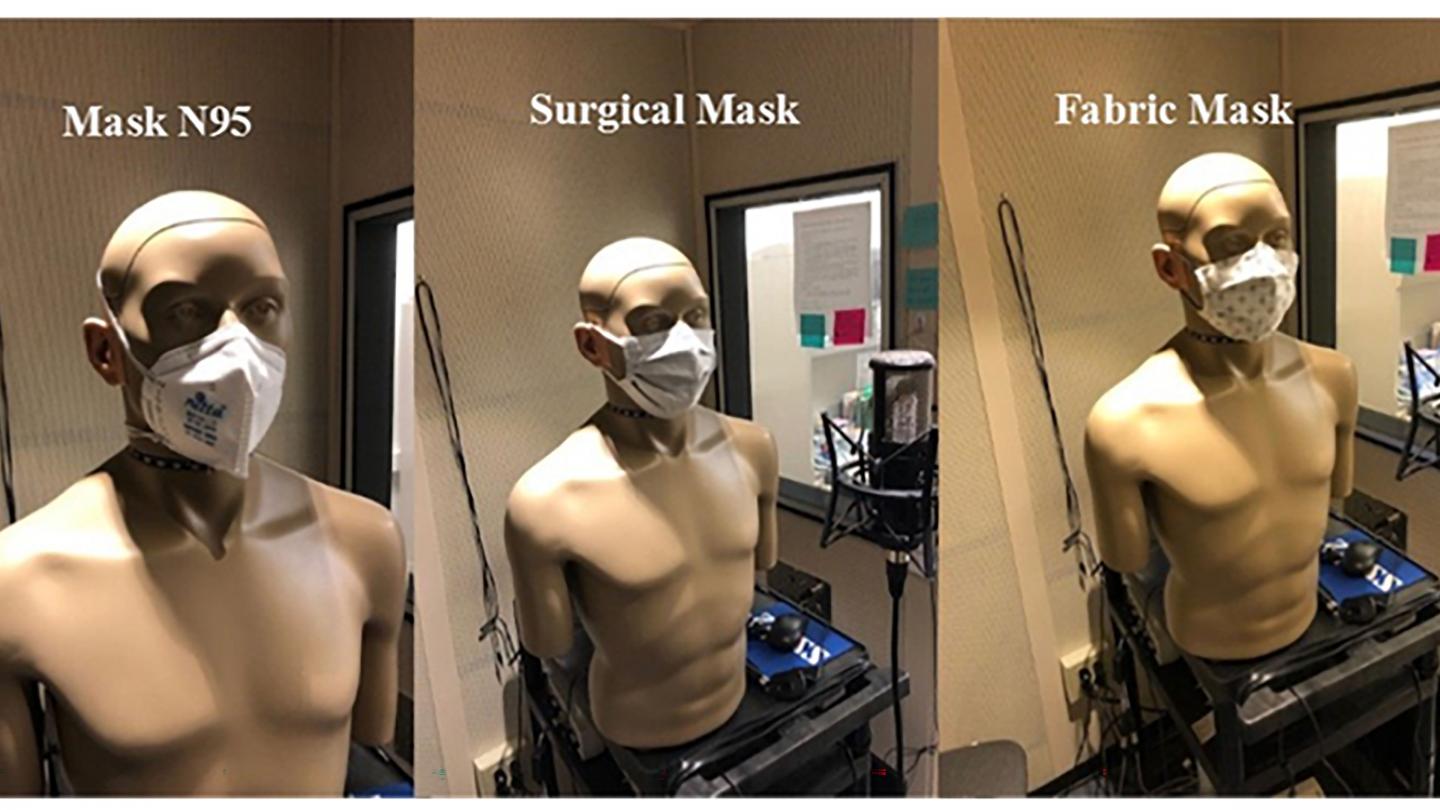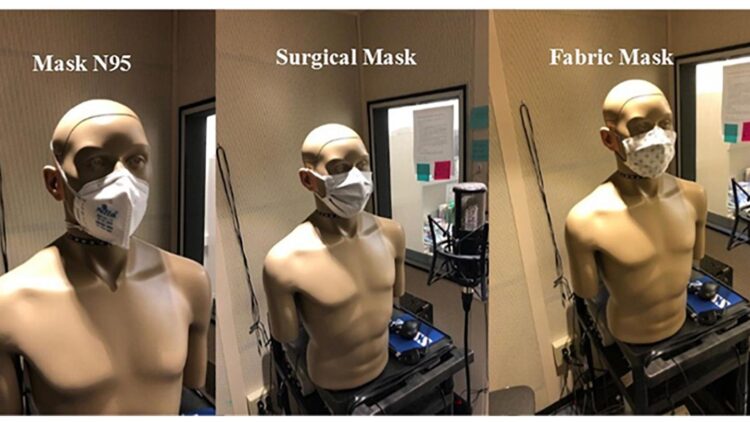As instructors continue to wear masks for the safety of themselves and their students, the question of which types of masks allow for the best speech intelligibility has a large impact on education.

Credit: Bottalico
MELVILLE, N.Y., December 9, 2020 — With the ubiquity of masks due to the coronavirus pandemic, understanding speech has become difficult. This especially applies to speech in classroom settings, where the presence of a mask and the acoustics of the room have an impact on students’ comprehension.
Pasquale Bottalico, at the University of Illinois at Urbana-Champaign, has been studying the effects of masks on communication. He will discuss his findings on the best way to overcome hurdles in classroom auditory perception caused by facial coverings at the 179th Meeting of the Acoustical Society of America, which will be held virtually Dec. 7-10. The talk, “Speech intelligibility in auralized classrooms when the talker is wearing a face mask,” will be presented at 3:15 p.m. Eastern (U.S.) on Wednesday, Dec. 9, as part of a session on classroom acoustics.
“Fabrics are often used for sound absorption due to their porous structure. A porous material absorbs sound energy as it dampens the oscillation of the air particles through friction,” Bottalico said. “As a consequence, face masks act as a low-pass filter that attenuates speech intensity, mainly at mid-to-high frequencies that are fundamental for speech comprehension.”
According to Bottalico, the frequency range most important for speech intelligibility falls within the range face masks affect the most.
In a comparison of three types of masks — a three-layer fabric mask, a surgical mask, and an N95 mask — in two different classroom settings, he found the fabric masks to be the most unfavorable option for listener comprehension and strongly suggests instructors use surgical or N95 masks.
“Because of the problems that COVID-19 is forcing us to face, the significance of this study consists in giving recommendation on the best type of masks to wear while teaching to minimize their negative effect on speech intelligibility,” said Bottalico. “The use of surgical and N95 masks can minimize negative effects on speech intelligibility and the students’ listening effort while protecting instructors and students alike.”
###
MORE MEETING INFORMATION
USEFUL LINKS
Main meeting website: https:/
Technical program: https:/
Press Room: http://acoustics.
WORLDWIDE PRESS ROOM
In the coming weeks, ASA’s Worldwide Press Room will be updated with additional tips on dozens of newsworthy stories and with lay language papers, which are 300-500 word summaries of presentations written by scientists for a general audience and accompanied by photos, audio, and video. You can visit the site during the meeting at http://acoustics.
PRESS REGISTRATION
We will grant free registration to credentialed journalists and professional freelance journalists. If you are a reporter and would like to attend, contact the AIP Media Line at 301-209-3090. For urgent requests, staff at [email protected] can also help with setting up interviews and obtaining images, sound clips or background information.
VIRTUAL MEDIA BRIEFINGS
Press briefings will be held virtually during the conference. Credentialed media can register in advance by emailing [email protected] include your full name and affiliation in the message. The official schedule will be announced as soon as it is available and registered attendees will be provided login information via email.
ABOUT THE ACOUSTICAL SOCIETY OF AMERICA
The Acoustical Society of America (ASA) is the premier international scientific society in acoustics devoted to the science and technology of sound. Its 7,000 members worldwide represent a broad spectrum of the study of acoustics. ASA publications include The Journal of the Acoustical Society of America (the world’s leading journal on acoustics), Acoustics Today magazine, books, and standards on acoustics. The society also holds two major scientific meetings each year. For more information about ASA, visit our website at http://www.
Media Contact
Media Contact
[email protected]





